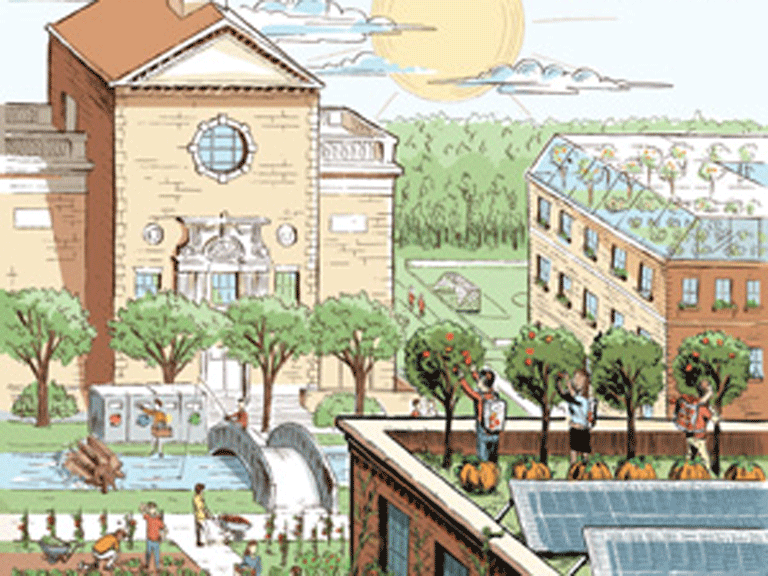Sustainability Efforts Throughout Campus
 Since Manhattan College first signed on to follow Mayor Bloomberg’s push to create a greener, greater New York City with PlaNYC, the College has increased its sustainability efforts throughout campus. PlaNYC was an initiative taken in 2007 to prepare New York City for 1 million more residents, improve the quality of life for all New Yorkers, combat climate change and strengthen the economy.
Since Manhattan College first signed on to follow Mayor Bloomberg’s push to create a greener, greater New York City with PlaNYC, the College has increased its sustainability efforts throughout campus. PlaNYC was an initiative taken in 2007 to prepare New York City for 1 million more residents, improve the quality of life for all New Yorkers, combat climate change and strengthen the economy.
One key effort the College signed on to was a partnership with the New York Restoration Project in 2009. As part of this partnership, Manhattan planted 24 trees with the MillionTreesNYC initiative, a citywide, public-private initiative to plant and care for 1 million new trees across the City’s five boroughs by 2017.
The College also joined the Association for Advancement in Sustainability for Higher Education (AASHE) in 2008 to help guide efforts in reducing its carbon footprint. Currently, Manhattan utilizes this membership as a way to connect to other institutions of higher education and also is considering AASHE’s benchmarking system, STARS (Sustainability Tracking and Rating System) for the future.
“Last year, the campus-wide Sustainability Committee was reactivated, and we made terrific progress on our goals for the year, which included the expansion of the community garden, installation of a hydration station, and standardizing campus recycling efforts,” says Richard Satterlee, Ph.D., vice president for student life at Manhattan College.
As Satterlee mentions, in addition to the community gardens, the Sustainability Committee has placed a Brita hydration station in Thomas Hall to encourage students to fill up reusable bottles rather than buy bottled water , and all of the recycling bins now have proper labels. Residence Life is also doing its part to give residents tips on having an eco-friendly dorm and maintaining a proper battery-recycling receptacle in each residence hall. A few of these tips are to purchase shared Energy Star-compliant appliances, turn off lights and air conditioners, close mini-blinds to cool rooms, open windows as an alternative to using air conditioners, and minimize water consumption when bathing and brushing teeth.
The committee is now planning for the 2013-2014 year and focusing on reducing the use of office paper, installing another hydration station in Leo Hall, expanding the College’s composting efforts, and possibly purchasing a recycling machine to add to one of the dorms.
Campus Buildings Go Green
As part of the College’s ongoing renovations throughout campus, all interior and exterior painting is being completed with low VOC (minimal to no pollutants) latex paint. Lighting on campus is also being updated with energy-efficient light bulbs and LED (light-emitting diode), where appropriate.
“Over the past year, two major projects were undertaken [fuel conversion of the Thomas Hall boilers and replacement and fuel conversion of the Overlook residence hall boilers], which will reduce our greenhouse gas emissions by an amount equivalent to taking 96 passenger vehicles off the road,” says Andrew Ryan, P.E., vice president for facilities. “The College will continue these efforts with the planned replacement and conversion of the Leo boilers in 2013. We are also investigating other cost-effective energy conservation measures across the campus.”
With the construction of the Raymond W. Kelly ’63 Student Commons underway, the College anticipates opening its first LEED (Leadership in Energy and Environmental Design) certified building. LEED is the nationally accepted benchmark for the design, construction and operation of high-performance green buildings.